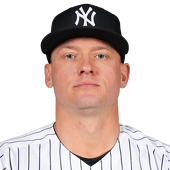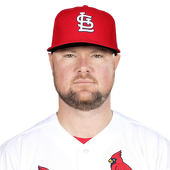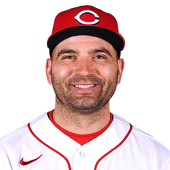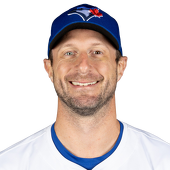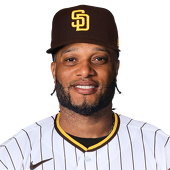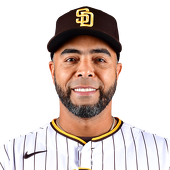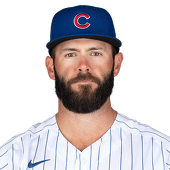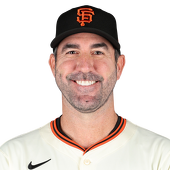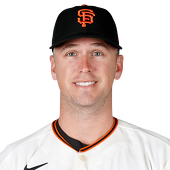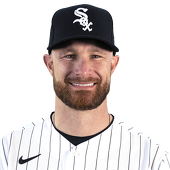2017 Fantasy Baseball draft strategy: Assessing risks of aging stars like Josh Donaldson, Joey Votto, Miguel Cabrera – CBSSports.com
There’s nothing magical about 30 that makes a player more likely to start to decline at that age, but it’s a useful round number when we start to look at players who might be on the downside of their careers.
Every player doesn’t age the same, of course.
Bryce Harper
may have peaked at 22, while
Jose Bautista
didn’t even get going until he was nearly 30.
Still, once a player hits his 30’s warning signs should start going up. Nobody is guaranteed to fall off at any specific age, but it happens to everyone at some point, so we need to be on alert for it.
I looked through the rankings of Scott White, Heath Cummings in relation to my own to identify the players in our collective top-36 past that age-30 barrier, and try to figure out who carries the most and least risk of that group.
Green Light
There’s a reason
Josh Donaldson
is the clear top option among this group. He combines elite production, averaging 33 homers, 106 runs and 103 RBI over his past four seasons with durability, having played at least 158 games in three of four seasons. His lowest total was 155 a year ago.
Donaldson also benefits from being a relative newcomer to the 30’s neighborhood, and there is no real reason to worry about him at this point.
Miguel Cabrera
has dealt with some aches and pains in recent years, but 2015 remains the only season since his rookie campaign where he didn’t play at least 148 games. He still managed to produce elite numbers in that campaign, winning the American League batting title while sporting a .974 OPS.
Cabrera also tapped back into his power last season by clubbing 38 homers, silencing concerns that one of the best right-handed hitters of his generation might be slowing down a bit.
Jon Lester
obviously doesn’t have the upside some of the other pitchers in this group, but it’s hard to find a more consistent one. He hasn’t had an ERA over 3.34 since 2013, and he has thrown at least 200 innings in every season going back to 2008 with the exception of one — he only managed 191 2/3 in 2011.
With an elite defense and offense backing him up and his track record of durability, Lester is the safe ace you can settle on.
Yellow Light
There really isn’t all that much to be concerned about with
Edwin Encarnacion
. He has been prone to some deep slumps in recent years, but has played 304 games over the past two seasons, combining for 81 homers and a .906 OPS. However, his strikeout rate jumped from 15.7 to 19.7 percent last season, and it’s hard to know just how the change in park and lineup will affect him.
It’s a minor amount of risk, but it’s there.
Joey Votto
might just be the new David Ortiz. It looked like he might have hit a wall in 2014 at age 30 when he sported just a .799 OPS while missing 100 games, but his final numbers in each of the past two seasons have been exceptional.
He has had a tendency to start slow in each of the last two, and at his age any sign of decline is noteworthy. However, after posting a .386/.513/.644 line over his past two seasons after the All-Star break, it’s safe to put those worries to bed.
With elite strikeout rates, a fantastic supporting cast and four straight seasons with at least 200 innings,
Max Scherzer
is just about the perfect Fantasy pitcher in the non-Clayton Kershaw category. He should be an easy green light, but he enters the season recovering from a stress fracture in his ring finger, a minor injury, but an injury nonetheless.
Minor issues have a tendency to become not so minor when it comes to pitchers, so he gets the smallest of downgrades in terms of risk.
Based on his recent history, you can feel pretty confident that
Robinson Cano
is going to be there for you, having played at least 156 games in every season going back to 2007. Which version will be there for you is the bigger question, as Cano’s power took a huge step back toward his peak levels in 2016, after falling off dramatically his first two in Seattle. Cano managed to boost his power numbers without sacrificing contact last season, but if he’s more like his 2014 or 2015 version, he will have trouble living up to his draft stock.
Was 2016 the start of a resurgence, or the last gasp of a future Hall of Famer?
Nelson Cruz
turning into one of the more reliable players in baseball pretty much came out of nowhere. But with at least 152 games and 40 homers in each of his past three seasons, this is the world we find ourselves in. That he has done it in his mid-30’s only makes it harder to fathom, and Cruz turns 37 mid-season.
Based solely on his track record, Cruz should give you little reason to doubt him, but as we saw with Jose Bautista last season, the fall can come without much warning.
Because he jumped on the scene so relatively late, it might be hard to believe he will really turn 30 in March. We might also have to accept that Arrieta just peaked at 29, which really wouldn’t be that hard to believe, all things considered.
His 2015 season was one for the ages, but he regressed in nearly every possible way in 2016. He struck out fewer batters, walked more, and induced fewer groundballs, so it’s no mistake his ERA jumped from 1.77 to 3.10 in 2016. The question now is does he reverse those losses or merely slow them down? Or, perhaps, do the trends that began last season continue?
Arrieta is still viewed as one of the best pitchers in baseball, but he posted a 3.67 ERA in his final 17 starts, including the postseason,
Another late bloomer,
Corey Kluber
has similarly been unable to live up to the heights of his Cy Young winning season in 2014, and it’s probably unfair to expect him to at this point. On the other hand, he hasn’t seen anything like the dramatic decline Arrieta did, still sporting a strikeout rate north of one per inning with peripherals that all consistently land in the low-3.00’s range.
We’ll see how Kluber responds to his own deep postseason run, but he has a strong defense and offense backing him up, and even reversed his apparent decline from 2015.
Ryan Braun
turned 30 during the 2013 season, a campaign that saw him hit just nine homers in 61 games before being hit with a season-ending suspension. He followed that up with his worst season ever in 2014, hitting just 19 home runs in 135 games, with a career-worst .266/.324/.453 line to his name. It would have been fair to assume that was the end of Braun’s time as an elite hitter, but he has bounced back in each of his past two seasons, hitting .305/.365/.538 in 2016, and even rediscovering his speed, with 40 steals over the last two.
Braun is probably the closes to the red category among this group, if only because we’ve already seen how bad things can get for him when they turn.
Red Light
Maybe
Justin Verlander
is just the Votto of the Mound, because he has pretty severe first vs. second-half splits the past two seasons:
First-half, 2015+2016: 23 GS, 147 IP, 138 K, 44 BB, 4.35 ERA, 1.19 WHIP
Second-half, 2015+2016: 31 GS, 213 IP, 229 K, 45 BB, 2.37 ERA, 0.929 WHIP
Verlander had some injury issues that at least gave him cover two years ago, but his 4.07 mark before the midsummer classic last season certainly qualified as a disappointment. Verlander will be 34 on opening day, and opinion even within our own staff is split on him.
There’s a lot to love about the way he closed out the 2016 season, but the overall track record recently leaves a lot to be desired. You’re betting on an obvious risk if you take Verlander as your ace.
Well, they don’t call them the “tools of ignorance” for nothing, so it’s no surprise that
Buster Posey
is the first of two catchers in the highest risk category. It’s a tough job, one that can lead to severe or more nagging injuries. It is also a job that tends to have a hard-living quality, with even the best catchers tending to come out of their peaks early.
Only three catchers since the 1970’s have posted multiple seasons with at least 5.0 WAR in their 30’s. Wins Above Replacement isn’t a perfect stand-in for Fantasy value, but it proves the point well enough — catchers tend not to age well.
Posey also started to slip last season, hitting just three homers after the All-Star break. That could just be a blip on the radar, but even a small slide back to the pack can really hurt, especially when your strongest argument as an elite Fantasy option is positional scarcity.
As for
Jonathan Lucroy
, 2016 was a bounce-back season for him, as he hit .292 and clubbed a career-high 24 homers, firmly re-establishing him as an elite option at the position. Of course, the caveats applied to Posey also stain Lucroy’s record, though he does at least have a better lineup and ballpark to prop him up a bit.
Lucroy had just a .717 OPS in 2015, so it’s hard to get away from that in our recent memory. Even if he wasn’t a catcher, Lucroy would be a risk with an early pick.

